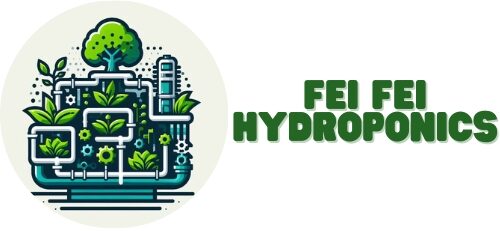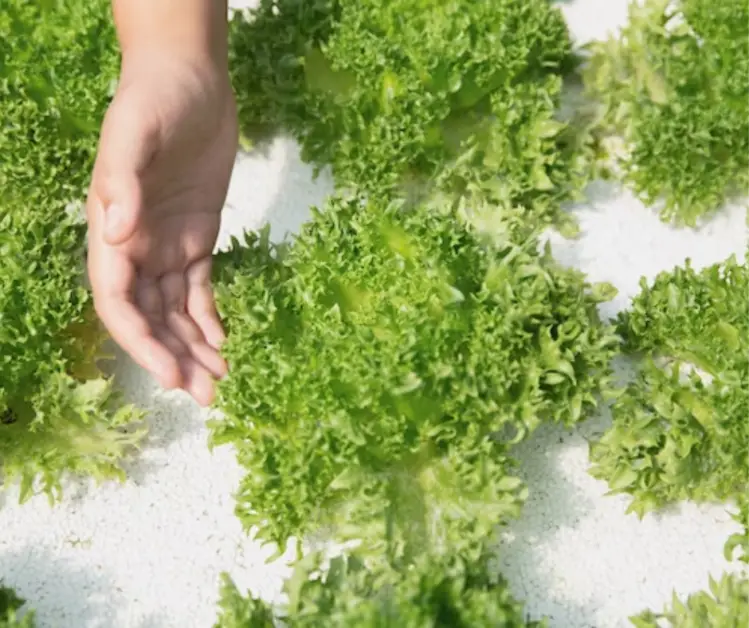Cultivating Baby Butter Lettuce Microgreens
Table of Contents
Understanding the Basics of Baby Butter Lettuce Microgreens
Baby butter lettuce microgreens are a popular choice for aspiring gardeners and culinary enthusiasts alike. These delicate greens are not only visually appealing but also pack a punch when it comes to flavor and nutrition. But what exactly are baby butter lettuce microgreens, and how can you grow them successfully?
Microgreens, in general, are young plants that are harvested at an early stage of growth, typically within two to three weeks after germination. Baby butter lettuce microgreens specifically refer to the tiny versions of butter lettuce, a popular salad green known for its tender leaves and mild, buttery taste. These microgreens are harvested when their first true leaves emerge, usually when they are around one to two inches tall. They are characterized by their vibrant green color and delicate texture, making them a delightful addition to salads, sandwiches, and other dishes. With a basic understanding of their growth requirements and proper cultivation techniques, you can enjoy a fresh and abundant supply of baby butter lettuce microgreens right at your fingertips.

Choosing the Right Seeds for Baby Butter Lettuce Microgreens
Choosing the right seeds is a crucial step when it comes to growing baby butter lettuce microgreens. The quality of the seeds will determine the success of your crop and the flavor of the microgreens. It’s important to select seeds that are specifically labeled for microgreen production, as these seeds are typically selected for their uniform size, fast germination rate, and high nutrient content.
When choosing seeds, look for reputable seed suppliers or brands that specialize in microgreen seeds. These suppliers often provide detailed information about each seed variety, including germination rates, time to maturity, and flavor profiles. This information can help you make informed decisions based on your specific preferences.
In addition to considering the variety, it is also important to check the seed quality. Look for seeds that are clean, free from moisture and fungal contamination. High-quality seeds will have a higher germination rate, leading to a greater success rate in growing your microgreens.
Overall, investing in high-quality seeds is essential for a successful baby butter lettuce microgreen harvest. By choosing the right seeds, you are setting yourself up for a bountiful crop with superior flavor and nutrition.
A table with information on growing baby butter lettuce microgreens. These tender, flavorful greens are perfect for salads, sandwiches, and other dishes. Here are the basics you need to know:
| Aspect | Details |
|---|---|
| Most Suitable Hydroponic Method | Tray method |
| Best Grow Medium | Coconut Coir |
| Time to Germinate | 1-3 days |
| Time to Maturity | 8-12 days |
| Optimal pH Range | 6.0-6.5 |
| EC Range (Nutrient Strength) | Around 0.8 |
| Growing Difficulty | Easy |
Growing Baby Butter Lettuce Microgreens:
- Hydroponics: Growing microgreens hydroponically is ideal due to their quick germination and the absence of messy soil. Hydroponic gardening simplifies the process.
- Equipment Needed:
- Coconut Coir or Biostrate Mat: Use this as the growing medium.
- Seed Planting Tray: Choose a perforated tray with holes at the bottom.
- Water Reservoir: Fill a solid tray with water for bottom watering.
- Nutrient-Rich Fertilizer: Essential for healthy growth.
- Clean Spray Bottle: Use it for misting.
- Bottom Watering: To keep microgreens moist, bottom watering is effective. Place the perforated tray with seeds into a water-filled tray. The substrate absorbs water from below, reducing the risk of mold or fungal growth.
- Seed Selection: Opt for varieties like Buttercrunch or Bibb, known for their reliability and mild flavor
Preparing the Growing Medium for Baby Butter Lettuce Microgreens
In order to ensure successful growth and development of baby butter lettuce microgreens, it is crucial to properly prepare the growing medium. The growing medium serves as the foundation for the microgreens, providing them with essential nutrients and support as they germinate and grow.
One of the most commonly used growing mediums for baby butter lettuce microgreens is peat moss. Peat moss is highly absorbent and has excellent water retention properties, which helps to keep the microgreens adequately hydrated throughout their growth cycle. To prepare the growing medium, fill a shallow tray or container with peat moss, ensuring that it is evenly spread and leveled. It is important to keep the layer of peat moss moist, but not waterlogged, as excessive moisture can lead to issues such as fungal growth. Regularly misting the peat moss with water can help maintain the optimal moisture level.
In addition to peat moss, other growing mediums such as coconut coir or vermiculite can also be used for baby butter lettuce microgreens. These alternatives provide similar benefits in terms of moisture retention and nutrient availability. Whichever growing medium you choose, ensure that it is free of any contaminants or impurities that may hinder the growth of the microgreens. By taking the time to properly prepare the growing medium, you can create an ideal environment for the baby butter lettuce microgreens to thrive and flourish.
Sowing Baby Butter Lettuce Microgreen Seeds
When it comes to sowing baby butter lettuce microgreen seeds, there are a few key factors to keep in mind for successful germination and growth. Firstly, it is important to choose high-quality seeds from a reputable supplier. Look for seeds that are specifically labeled for microgreen production, as these will have undergone rigorous testing to ensure optimal germination rates and flavor.
Before sowing the seeds, prepare the growing medium by filling trays or containers with a suitable potting mix or soilless medium. It is essential to moisten the medium thoroughly but avoid making it overly wet, as excessive moisture can lead to rotting of the seeds. Gently press down the medium to create a firm and even surface for sowing the seeds.
Next, scatter the baby butter lettuce microgreen seeds evenly across the surface of the prepared medium. Aim for a dense but not overcrowded distribution, as this will promote healthy growth and prevent the development of mold or diseases. Lightly press the seeds into the surface of the medium, ensuring good seed-to-soil contact.
Properly sowing baby butter lettuce microgreen seeds is crucial for establishing a strong foundation for healthy and vibrant growth. By selecting quality seeds and properly preparing the growing medium, you can ensure a successful start to your microgreen garden.

Providing Optimal Lighting for Baby Butter Lettuce Microgreens
When it comes to providing optimal lighting for baby butter lettuce microgreens, it’s crucial to understand the unique needs of these delicate greens. As they are in their early growth stages, baby butter lettuce microgreens require an adequate amount of light to develop properly and reach their full potential.
First and foremost, it’s important to ensure that your baby butter lettuce microgreens receive sufficient sunlight. Placing them near a window that receives direct sunlight for at least 4-6 hours a day is ideal. However, if you don’t have access to ample natural sunlight or are growing the microgreens indoors, you can also use artificial lighting to meet their light requirements.
When using artificial lighting, it’s recommended to utilize full-spectrum LED grow lights. These lights emit the full range of light wavelengths required for healthy plant growth, including red and blue light that are essential for photosynthesis. Position the grow lights just above the microgreens, approximately 6-12 inches away, to provide them with the necessary intensity and coverage. Additionally, make sure to follow the manufacturer’s instructions on light duration to avoid overexposing or underexposing the baby butter lettuce microgreens.
Remember, providing optimal lighting is vital for the success of your baby butter lettuce microgreens, as it directly impacts their growth and quality. By ensuring they receive adequate sunlight or using the right artificial lighting, you can create an ideal environment for these tiny greens to thrive and flourish.
Watering Techniques for Baby Butter Lettuce Microgreens
Watering is a crucial aspect of cultivating healthy baby butter lettuce microgreens. These delicate plants require gentle and consistent moisture to thrive and reach their full potential. To ensure proper watering techniques, it is essential to understand the unique needs of these microgreens.
When it comes to watering baby butter lettuce microgreens, the key is to provide moisture without overwatering. Overwatering can lead to root rot and mold growth, which can be detrimental to the health of the plants. On the other hand, underwatering can cause stunted growth and wilted leaves. Striking the right balance is essential for the successful cultivation of these microgreens.
To water baby butter lettuce microgreens, a misting or spraying method is often recommended. This method allows for even distribution of moisture without causing any damage to the delicate foliage. Using a spray bottle or a misting nozzle attached to a watering can, gently mist the growing medium and the microgreens. Ensure that the water reaches the roots without creating overly wet conditions. Monitor the moisture level regularly and adjust the watering frequency accordingly, taking into account factors such as temperature and humidity. By maintaining proper watering techniques, you can support healthy growth and development of the baby butter lettuce microgreens.
Maintaining Proper Temperature and Humidity for Baby Butter Lettuce Microgreens
Maintaining proper temperature and humidity is crucial for the successful growth of baby butter lettuce microgreens. These delicate greens require specific environmental conditions to thrive and reach their full potential.
When it comes to temperature, it is important to provide a consistent and optimal range. Baby butter lettuce microgreens prefer a temperature between 68°F (20°C) and 75°F (24°C) for ideal growth. Temperatures above or below this range can hinder their development and lead to poor quality harvests. It is advisable to use a thermometer to monitor the temperature in your growing area and make necessary adjustments to maintain the desired range.
In addition to temperature, humidity plays a significant role in the growth of baby butter lettuce microgreens. These greens thrive in a humid environment with a relative humidity (RH) of around 60% to 70%. Maintaining proper humidity levels helps prevent the microgreens from drying out and promotes healthy growth. Using a hygrometer to measure RH can help you ensure that the humidity remains within the preferred range. If the humidity is too low, you can increase it by misting the growing area with water or using a humidifier. On the other hand, if the humidity is too high, proper ventilation should be employed to allow excess moisture to escape.
Preventing Common Pests and Diseases in Baby Butter Lettuce Microgreens
Common pests and diseases can pose a significant threat to the health and productivity of baby butter lettuce microgreens. However, with proper prevention strategies in place, gardeners can effectively protect their delicate greens and ensure a successful harvest.
One of the first steps in preventing pests and diseases is to maintain a clean and hygienic growing environment. Regularly remove any debris or dead plant matter from the growing area, as these can attract pests and provide a breeding ground for diseases. Additionally, make sure to sanitize your tools and equipment before and after each use to minimize the risk of contamination.
Implementing proper crop rotation practices is another effective measure to prevent the buildup of pests and diseases. Avoid planting baby butter lettuce microgreens or any related crops in the same area for consecutive growing seasons. This will help break the lifecycle of pests and minimize the spread of diseases that may have affected previous crops.
Furthermore, it is crucial to practice good watering habits to discourage the development of diseases. Overwatering can create a damp environment, promoting the growth of fungal diseases. Instead, water the microgreens from the bottom, allowing the roots to absorb the moisture they need without saturating the growing medium.
By following these prevention strategies, gardeners can significantly reduce the risk of pests and diseases in baby butter lettuce microgreens, ensuring healthy and thriving plants. Remember, establishing a strong foundation of prevention will ultimately lead to a more enjoyable and rewarding gardening experience.
Importance of Proper Ventilation for Baby Butter Lettuce Microgreens
Proper ventilation is essential for the healthy growth of baby butter lettuce microgreens. These delicate greens require a constant supply of fresh air to thrive and reach their full potential. Adequate ventilation helps in maintaining the ideal level of humidity, preventing the development of mold and diseases that can hinder the growth of the microgreens.
Without proper ventilation, the trapped air can become stagnant, leading to a buildup of moisture and an increased risk of fungal infections. Furthermore, inadequate air circulation can result in weak and elongated stems, making the microgreens more susceptible to damage and breakage. By ensuring proper ventilation, you can create an optimal environment for the baby butter lettuce microgreens, promoting stronger growth and enabling them to absorb carbon dioxide effectively through their leaves. The exchange of gases allows the microgreens to perform photosynthesis efficiently, enhancing their overall health and vitality.
To achieve proper ventilation, you can utilize various methods such as using fans, opening windows, or implementing air circulation systems. By maintaining a consistent airflow around the microgreens, you can reduce the risk of problems arising from poor ventilation and provide them with the best possible conditions for growth. As a result, you will be rewarded with vibrant and flavorful baby butter lettuce microgreens that are not only visually appealing but also nutrient-rich. So, don’t underestimate the significance of proper ventilation when cultivating these tiny greens!
Monitoring and Adjusting pH Levels for Baby Butter Lettuce Microgreens
Monitoring and adjusting the pH levels is crucial when growing baby butter lettuce microgreens. As hydroponic plants, they rely on a precise balance of nutrients and pH in the growing medium to thrive. The pH scale measures the acidity or alkalinity of a substance, with a value of 7 considered neutral, values below 7 indicating acidity, and values above 7 indicating alkalinity. For baby butter lettuce microgreens, maintaining a slightly acidic to neutral pH range of 5.5 to 6.5 is optimal for nutrient uptake and overall growth.
To monitor pH levels, using a pH meter or test kit is recommended. These tools provide accurate readings of the pH level in the growing medium, allowing gardeners to make necessary adjustments. When testing the pH, it is important to take multiple samples from different areas of the medium to ensure an accurate representation. pH levels can vary in different parts of the growing medium, and checking multiple samples will provide a more reliable measurement.
Once the pH level has been determined, adjustments can be made using pH-adjusting solutions or additives. For example, if the pH is too high (alkaline), the addition of a pH-lowering agent like sulfuric or phosphoric acid can be used to bring it to the desired range. On the other hand, if the pH is too low (acidic), adding a pH-raising agent like potassium hydroxide or calcium carbonate can help raise the pH to the appropriate level. It is important to follow the manufacturer’s instructions and make gradual adjustments to avoid sudden pH swings that could stress or damage the microgreens.
Monitoring and adjusting pH levels for baby butter lettuce microgreens is an essential part of maintaining optimal growing conditions. By keeping the pH within the recommended range, gardeners can ensure that their microgreens have access to the necessary nutrients for healthy growth and development. Regular pH monitoring, coupled with timely adjustments, will contribute to the overall success of the microgreens, resulting in vibrant and flavorful baby butter lettuce microgreens ready for harvest.
Understanding the Growth Stages of Baby Butter Lettuce Microgreens
Understanding the growth stages of baby butter lettuce microgreens is essential for successful cultivation. These delicate greens go through several distinct phases as they develop from seeds to mature plants ready for harvest. By familiarizing yourself with these stages, you can ensure optimal growing conditions and make informed decisions that will contribute to a bountiful harvest.
The first stage of growth is germination, in which the baby butter lettuce seeds absorb water and sprout. This usually occurs within a few days after sowing, and you’ll notice tiny white roots emerging from the seeds. Once the seeds have germinated, the second stage, known as the cotyledon stage, begins. During this stage, the first set of leaves, called cotyledons, unfurl and provide nourishment to the seedling. As the seedling grows, it enters the third stage, the true leaf stage. Here, the lettuce starts developing its characteristic leaves, different from the initial cotyledons. The true leaf stage marks the transition from a seedling to a young plant, laying the foundation for further growth and development.
Understanding the growth stages of baby butter lettuce microgreens will help you make informed decisions regarding the optimal timing for watering, providing light, and maintaining temperature and humidity levels. By closely monitoring and nurturing your microgreens throughout these stages, you can ensure they thrive and reach their full flavor and nutritional potential.
Harvesting and Storing Baby Butter Lettuce Microgreens
Harvesting baby butter lettuce microgreens is an exciting and rewarding process. These delicate greens are ready to be harvested when they reach a height of about 1-2 inches, which usually takes around 10-14 days after sowing the seeds. It’s important to use clean, sharp scissors or a knife to cut the microgreens just above the soil line, leaving the roots intact.
After harvesting, it’s crucial to store baby butter lettuce microgreens properly to maintain their freshness and flavor. The best way to store them is by rinsing them gently with water to remove any soil or debris. Pat them dry with a clean cloth or paper towel, and then place them in an airtight container lined with a damp paper towel. This will help to retain their moisture and keep them crisp and fresh for up to a week in the refrigerator. Remember to check them regularly and discard any wilted or spoiled greens. With proper harvesting and storage techniques, you can enjoy the delicious taste and nutritional benefits of baby butter lettuce microgreens throughout the week.

Exploring Various Culinary Uses for Baby Butter Lettuce Microgreens
Baby butter lettuce microgreens are not only visually appealing but also add a unique flavor and texture to a wide range of culinary dishes. These delicate greens can be used in various ways to enhance the taste and presentation of your meals.
One of the simplest ways to incorporate baby butter lettuce microgreens into your dishes is by using them as a garnish. Sprinkle a handful of these microgreens over salads, soups, or sandwiches to add a fresh and vibrant touch. Their mild, buttery taste pairs well with a variety of ingredients, making them a versatile option for both savory and sweet dishes.
Looking to elevate your appetizers? Baby butter lettuce microgreens can be used to create visually stunning canapés and hors d’oeuvres. Top mini toasts or crackers with a dollop of cream cheese or goat cheese, then delicately place a few of these microgreens on top. The result is not only visually appealing but also adds a burst of flavor and crunch to each bite.
For those who enjoy experimenting in the kitchen, baby butter lettuce microgreens can be used to create unique salads and dressings. Toss a handful of microgreens with other leafy greens, cherry tomatoes, and your favorite salad toppings for a refreshing and nutritious salad. To take it a step further, blend some microgreens with olive oil, lemon juice, and herbs to create a flavorful and vibrant dressing.
In summary, baby butter lettuce microgreens offer endless possibilities when it comes to culinary uses. Whether you want to enhance the visual appeal of your dishes or add a burst of flavor and texture, these microgreens are a fantastic addition to any meal. Don’t be afraid to get creative and experiment with different recipes to make the most of their delicate and delicious qualities.
Nutritional Benefits of Baby Butter Lettuce Microgreens
Baby butter lettuce microgreens are not only delicious but also packed with essential nutrients, making them a great addition to any diet. These tiny greens are rich in vitamins A and C, which are known for their immune-boosting properties. Vitamin A is essential for maintaining healthy skin, vision, and immune function, while vitamin C acts as an antioxidant and aids in collagen production.
In addition to vitamins, baby butter lettuce microgreens are a good source of minerals such as potassium, calcium, and iron. Potassium is essential for maintaining proper heart function and blood pressure levels, while calcium is important for strong bones and teeth. Iron plays a crucial role in oxygen transport throughout the body and is particularly important for individuals at risk of iron deficiency, such as pregnant women or those with certain medical conditions.
When consumed regularly, baby butter lettuce microgreens can provide a significant boost to your overall nutrient intake, contributing to a well-rounded and healthy diet. Incorporating these greens into your meals can be as simple as adding them to salads, sandwiches, or wraps for a burst of freshness and flavor. So why not give baby butter lettuce microgreens a try and enjoy their nutritional benefits today?
A table highlighting the nutritional benefits of baby butter lettuce microgreens:
| Nutrient | Benefits |
|---|---|
| Vitamin A | – Eye Health: Baby butter lettuce is particularly high in vitamin A, providing over 160% of your daily dose in just one serving. |
| Vitamin K | – Blood Clotting: It also contains vitamin K, which plays a crucial role in proper blood clotting. |
| Vitamin C | – Immune System: Baby lettuce contributes to your immune system health. |
| Folate | – Cell Growth: Folate is essential for cell growth and development. |
| Calcium | – Bone Health: It adds calcium to your diet. |
| Iron | – Iron Intake: Baby butter lettuce microgreens are a good source of iron. |
| Fiber | – Digestive Health: The fiber content supports healthy digestion. |
| Hydration | – Water Content: With its high water content, baby lettuce is hydrating, especially during hot weather. |
| Antioxidants | – Overall Health: It contains antioxidants that protect against chronic diseases. |
Troubleshooting Common Issues in Baby Butter Lettuce Microgreens
When growing baby butter lettuce microgreens, you may encounter certain issues that can affect their growth and overall health. Addressing these problems promptly and effectively is crucial to ensure a successful harvest. Here are some common troubleshooting tips for baby butter lettuce microgreens:
1. Poor germination: If your seeds are not sprouting properly, it could be due to various factors. Check the seed quality and expiration date, as old or low-quality seeds may have reduced viability. Additionally, make sure you are providing optimal conditions for germination, such as maintaining proper moisture levels, temperature, and lighting.
2. Leggy or elongated growth: Leggy or overgrown microgreens often indicate low light levels. If your baby butter lettuce microgreens are stretching towards the light source, it is a sign that they need more intense light. Adjust the height and intensity of your grow lights accordingly, ensuring the microgreens receive adequate light for healthy and compact growth.
Remember that troubleshooting common issues in baby butter lettuce microgreens involves careful observation and adjustment of various environmental factors. By addressing problems promptly and providing optimal growing conditions, you can cultivate vibrant and flavorful baby butter lettuce microgreens.
Tips
Add the following paragraphs:
1) Keep your baby butter lettuce microgreens healthy and thriving with these helpful tips. First, ensure that you monitor the moisture levels in the growing medium consistently. Overwatering can lead to root rot, while underwatering can cause wilting and stunted growth. Strike a balance by checking the moisture level regularly and adjusting your watering schedule accordingly.
2) Secondly, provide adequate ventilation to prevent the buildup of excess humidity and stagnant air. Good airflow helps prevent the development of fungal diseases and encourages strong and robust growth. Consider using fans or opening windows to improve air circulation around your baby butter lettuce microgreens. Additionally, be mindful of temperature fluctuations and try to maintain a stable environment to ensure optimal growth. By following these tips, you’ll be on your way to producing healthy and delicious baby butter lettuce microgreens in no time.
How long does it take for baby butter lettuce microgreens to grow?
Baby butter lettuce microgreens typically take around 10-14 days to reach harvestable size.
Can I reuse the growing medium for baby butter lettuce microgreens?
It is not recommended to reuse the growing medium for baby butter lettuce microgreens as it may harbor pests or diseases. It is best to start with a fresh batch of growing medium for each new crop.
How often should I water baby butter lettuce microgreens?
Baby butter lettuce microgreens should be watered once or twice a day, or whenever the top layer of the growing medium feels dry. Avoid overwatering as it can lead to root rot.
What temperature and humidity levels are ideal for growing baby butter lettuce microgreens?
Baby butter lettuce microgreens thrive in temperatures between 60-75°F (15-24°C) and humidity levels around 50-70%. Maintaining adequate temperature and humidity is crucial for their healthy growth.
How can I prevent pests and diseases in my baby butter lettuce microgreens?
To prevent pests and diseases, ensure proper ventilation, maintain cleanliness in the growing area, and regularly inspect plants for any signs of infestation or disease. Consider using organic pest control methods if necessary.
How do I know when to harvest baby butter lettuce microgreens?
Baby butter lettuce microgreens are ready to be harvested when they have developed their first set of true leaves, usually around 10-14 days after sowing. Harvest them by snipping just above the soil level.
How should I store harvested baby butter lettuce microgreens?
After harvesting, gently wash the microgreens, pat them dry, and store them in an airtight container or a plastic bag with a paper towel to absorb excess moisture. Keep them refrigerated and use within a few days for the best quality.
What are some culinary uses for baby butter lettuce microgreens?
Baby butter lettuce microgreens are versatile and can be used as a fresh and nutritious addition to salads, sandwiches, wraps, smoothies, or as a garnish for various dishes. They add a delicate, mild flavor to any culinary creation.
What are the nutritional benefits of baby butter lettuce microgreens?
Baby butter lettuce microgreens are packed with essential nutrients, including vitamins
What should I do if I encounter common issues with my baby butter lettuce microgreens?
If you encounter common issues such as yellowing leaves, wilting, or mold growth, it is important to address the underlying problem. This may involve adjusting watering techniques, improving ventilation, or addressing nutrient deficiencies.







